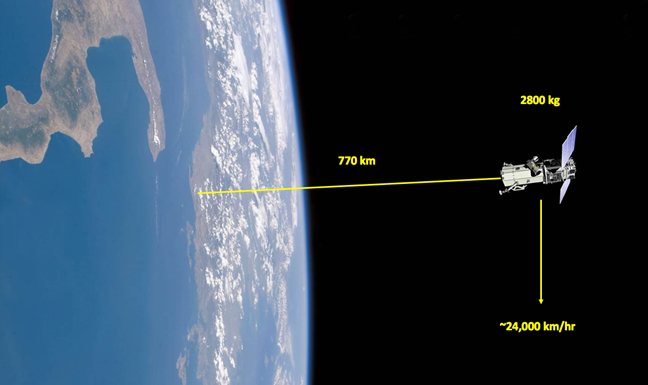 WASHINGTON: The US intends to finish overhauling regulations on remote sensing satellites by the end of October, says Commerce Department head Wilbur Ross. The US Intelligence Community and DoD are keen to find ways to leverage the rapidly growing commercial remote sensing industry and its advanced technologies such as rapid revisits of targets and additive manufacturing.
WASHINGTON: The US intends to finish overhauling regulations on remote sensing satellites by the end of October, says Commerce Department head Wilbur Ross. The US Intelligence Community and DoD are keen to find ways to leverage the rapidly growing commercial remote sensing industry and its advanced technologies such as rapid revisits of targets and additive manufacturing.
“Our immediate goal is to produce a new draft rule that encourages domestic innovation while ensuring the global competitiveness and market leadership of American companies,” he told the sixth meeting of the National Space Council.
The Commerce Department licenses remote sensing satellites through the National Oceanic and Atmospheric Administration (NOAA), at least for the moment. The Trump Administration wants to shift that responsibility to a new Bureau of Space Commerce, but Congress has blocked the move.
Commerce put forward new draft regulations in May designed to speed the licensing process. They would replace the current process of case-by-case review that require DoD and State Department input in favor of a two-tier license system, based primarily on the potential risk to national security. Commerce estimated that under the low-risk, high-risk schemata, about 40 percent of license applications would be considered “low risk” requiring little review. The rules guarantee a 60-day turn-around for a license decision.
The review of remote sensing rules was mandated by the White House in May 2018 under Space Policy Directive-2 (SPD-2) as part of the Trump Administration’s effort to cut red tape and promote commercial innovation. To that end, the new rules will operate with a presumption of approval. In essence, the new rules would create a form of ‘generic’ license for most remote sensing activities, while applying a more robust process for those found to be of potential national security concern.
However, a number of commercial remote sensing satellites — including major players Maxar, Planet, HawkEye 360, BlackSky Global and Spire Global — have formally objected to the proposed rules, arguing they would hobble international sales. Indeed, as colleague Caleb Henry at Space News first reported, the Advisory Committee on Commercial Remote Sensing (ACCRES), representing the remote sensing industry was highly critical, of the proposed rules at its June meeting. ACCRES members argued that most commercial firms would be considered high risk.
Ross acknowledged the debate, saying: “We have received extensive feedback from U.S. companies in the fast-developing and extremely competitive global market for remote sensing.”
ACCRES also said that the proposed regulations would unduly restrict imaging of satellites and space debris for space situational awareness (SSA) — ironically a commercial capability that Commerce itself is looking to tap as it assumes responsibility for civil SSA activities such as collision warning.

Wilbur Ross
Indeed, Ross outlined Commerce’s progress on SSA and space traffic management plans at yesterday’s meeting. “The Commerce Department is actively pursuing the agenda and goals outlined in Space Policy Directive 3 on space traffic management,” he said. “We have a strong partnership with the Department of Defense to modernize our space situational awareness capabilities.” Ross also noted that the department has designated Mark Daley, a senior executive with experience in both defense and space commerce, to lead the “SSA ‘Landing Team’ at the 18th Space Control Squadron at Vandenberg Air Force Base.”
Commerce is moving forward on its joint effort with the State Department to streamline export control rules regarding optical remote sensing capabilities of satellites, Ross said, as well as on high-resolution Earth imagery and other satellite components such as thrusters.
“Commerce is working with the State Department and other agencies to review public comments on our March proposed rule, so that Commerce can issue a final rule this fall,” he said. “At an industry day I hosted in April, we discussed the need to maintain export controls with some countries, while streamlining them for others.”
Both Commerce and the Pentagon have been trying to figure out how to allow US allies, especially the so-called Five Eyes allies — Australia, Canada, New Zealand and the United Kingdom — to better integrate in the US remote sensing space architecture. Export control relief is one big factor in being able to do so, industry sources say.
Army wraps up FLRAA PDR, incorporating special ops design changes
According to a SOCOM official, the Army included feedback from the command that led to design changes like hardware for a refueling probe and features that will enable special operators to make unique modifications.



























